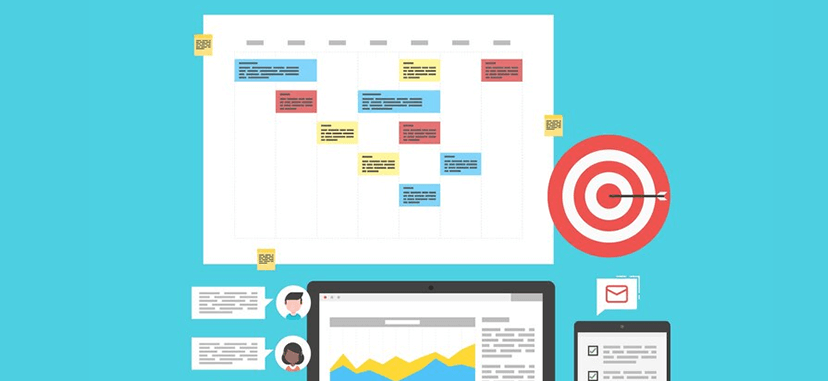
Click the button to start reading
Unlocking the Mystery of Project Management Artifacts: The Essential Guide to Navigating Your Projects Successfully
Understanding the intricacies of project management artifacts isn’t just about getting to grips with fancy terminology or adding another layer of complexity to your projects.
It’s about wielding a set of tools that can profoundly transform your approach to managing tasks, deadlines, and team dynamics. With the right artifacts in your arsenal, you’re not just going through the motions; you’re architecting a roadmap to success with precision and confidence.

What Are Project Management Artifacts?
Let’s demystify this right off the bat. When we talk about project management artifacts, we’re referring to the documents, templates, and records that provide concrete evidence of your project’s progress and direction. They’re your project’s pulse, capturing the nuts and bolts of your planning, execution, and delivery stages.
However, understanding artifacts is more than memorizing definitions. It’s recognizing these tools as your allies in bringing clarity and focus to your project. From the initiation document that kick-starts your journey to the risk register that keeps your nightmares at bay, each artifact plays a pivotal role.
Why Should You Care About Project Management Artifacts?
Consider them your project’s compass; without them, navigating the complexities of team dynamics, scope changes, and deadline pressures becomes a shot in the dark. They equip you with the ability to anticipate challenges, communicate effectively with stakeholders, and keep your project on track.
For example, let’s peel back the layers of a Scope Statement. Ever found yourself in a project that’s spiraling out of control, with new requests popping up every other day? A well-crafted scope statement is your defense against the dreaded scope creep. It’s akin to having a detailed map in an unknown territory, ensuring everyone’s singing from the same hymn sheet.

The Essential Project Management Artifacts You Need to Know
Navigating through the key artifacts is like assembling a puzzle; each piece is crucial to revealing the bigger picture. Let’s walk through a few essentials:
- Project Charter: Project Charter: Imagine this as your project’s very own Declaration of Independence. It’s not just a boring document—it’s your project’s founding principles, boldly declaring ‘Here’s what we’re about to conquer, and here’s why it’s going to be legendary.’ Think of it as the rally cry that gets everyone from interns to execs equally fired up
- Scope Statement: This is your project’s boundaries put to paper. It clarifies what’s in and what’s out, keeping everyone aligned and focused on the goal post, not the sidelines.
- Work Breakdown Structure (WBS): Imagine breaking down your project into bite-sized, manageable pieces. That’s your WBS. It’s a powerful visual tool that categorizes your project’s scope into chunks that your team can rally around and conquer.
- Risk Register: If project management were a game of chess, your Risk Register would be your strategy playbook. It helps you anticipate moves, plan defenses, and attack project risks before they become threats.
Each of these artifacts serves a unique purpose, acting as a lighthouse guiding your project through foggy uncertainties towards successful shores.
Ensuring your project management artifacts are not just filled out but actively used and referred to throughout your project’s lifecycle can make the difference between a project that flounders and one that flourishes.

How to Create and Use Artifacts to Your Advantage
Turning theory into practice comes with its challenges, but it’s also where the magic happens. Let’s roll up our sleeves and dive into how you can create and leverage these project management artifacts, not just as paperwork, but as tools to drive your project forward.
First off, creating these artifacts doesn’t have to be a chore or a tick-box exercise. It’s about finding what resonates with your project’s needs and tailoring each document to serve those needs best. Here’s how you can get started:
- Start with the End in Mind: Before diving into creating any artifact, ask yourself, “What’s the purpose of this document?” For a Project Charter, you’re looking to define the vision and boundaries of your project. Each artifact should serve as a step towards achieving your project’s goals.
- Keep it Lean: It’s easy to fall into the trap of overcomplicating documents with unnecessary details. The key is to keep it concise. If it doesn’t add value or clarity to your project, it probably doesn’t need to be there.
- Make it a Team Effort: Engage your team in the creation of these artifacts. Not only does this ensure a diversity of perspectives, but it also fosters a sense of ownership and commitment to the project from the get-go.
- Review and Revise: Your project will evolve, and so should your artifacts. Regular reviews allow you to update documents to reflect the current state of your project, ensuring they remain useful and relevant.
Now, let’s talk about putting these artifacts to work:
- Visibility is Key: Make your artifacts accessible to everyone involved in the project. They can’t guide your project if they’re hidden away on someone’s hard drive. Tools like shared folders, project management software, or even a central physical repository can keep everyone in the loop.
- Use Them as Discussion Starters: Artifacts like the Risk Register or the WBS can serve as excellent tools for team meetings. They can help steer discussions, focus on problem-solving, and track progress.
- Measure Your Success: Use your scope statement or project charter as benchmarks for measuring project success. They define what you set out to achieve, so refer back to them when evaluating project outcomes.
Creating and utilizing project management artifacts effectively is more than just documentation; it’s about steering your project with intention and precision. By keeping these tools lean, collaborative, and dynamic, you turn them into your project’s compass, guiding you from conception to completion.

Beyond the Basics: Advanced Artifacts for Project Masters
As you become more comfortable with the foundational artifacts in project management, there’s a whole new level to explore.
Advanced artifacts can elevate your project management game, offering deeper insights, better control, and enhanced communication. Let’s venture into the realm of the masters:
- Project Dashboards: Imagine having a high-level view of your project’s status at a glance – that’s what a well-designed project dashboard offers. It aggregates key metrics, timelines, and statuses into a single, visual snapshot, enabling you to make informed decisions swiftly. Integrating real-time data, dashboards can become the heartbeat of your project, spotlighting achievements and flagging areas needing attention.
- Change Logs: Change is inevitable in any project, but how you track and manage it can make all the difference. Change logs offer a chronological account of all the modifications within your project, providing a clear trail from inception to delivery. They’re crucial for maintaining transparency, managing stakeholder expectations, and ensuring that every team member is aligned with the current project scope and objectives.

Integrating Artifacts into Your Project Management Software
Gone are the days of managing projects through spreadsheets and emails alone. Modern project management tools have revolutionized how artifacts are created, shared, and maintained.
Here’s how to leverage technology to your advantage:
- Centralization: Choose software that allows you to store all your artifacts in one place. This central repository becomes the single source of truth for your project, accessible by anyone, anytime.
- Automation: Many project management tools offer features to automate the creation and updating of certain artifacts. For instance, a change log can be automatically updated every time a document is modified, saving you time and ensuring accuracy.
- Collaboration: Look for tools that facilitate collaboration. Real-time editing, commenting, and notification features can make the process of updating and maintaining artifacts a collective effort rather than a solitary task.
The shift towards utilizing advanced artifacts and integrating them with project management software represents a significant leap in managing your projects more effectively. By embracing these tools, you move from simply keeping track of projects to mastering the art of project management, ensuring that your projects are not just completed but delivered with excellence.

Common Pitfalls and How to Avoid Them
Even the most seasoned project managers can face challenges with artifacts.
Recognizing these pitfalls and knowing how to sidestep them can save your project from unnecessary hurdles:
- Artifact Overload: It’s tempting to document every detail, but excess can lead to confusion and inefficiency. Solution? Prioritize. Focus on artifacts that add real value to your project, ensuring each one has a clear purpose and audience.
- Stale Artifacts: An artifact that isn’t updated is like a map that doesn’t reflect the terrain. Avoid this by scheduling regular reviews and updates, ensuring your project artifacts live and breathe alongside your project.
- Siloed Information: When artifacts aren’t shared or accessible, they can’t do their job. Counter this by centralizing artifact storage and encouraging an open-access policy for your team.
- Generic Templates: While templates save time, too generic ones may not fit your project’s unique needs. Customize artifacts to reflect the specific realities and requirements of your project, making them more relevant and useful.
By staying vigilant and responsive, you can ensure that your project management artifacts serve as powerful allies, guiding your project to a successful conclusion. These advanced tools not only streamline project management tasks but also ensure projects are delivered with excellence.

Conclusion: Wrapping It Up: Your Path to Becoming an Artifact Ace
You’ve journeyed through the world of project management artifacts, uncovering their mysteries and learning how to wield them effectively.
From the foundational documents like the Project Charter and Scope Statement to advanced tools such as Project Dashboards and Change Logs, you’re now equipped with the knowledge to elevate your project management approach. But remember, the true mastery of these artifacts doesn’t just lie in knowing what they are but in understanding how and when to use them to bring clarity, control, and efficiency to your projects.
















